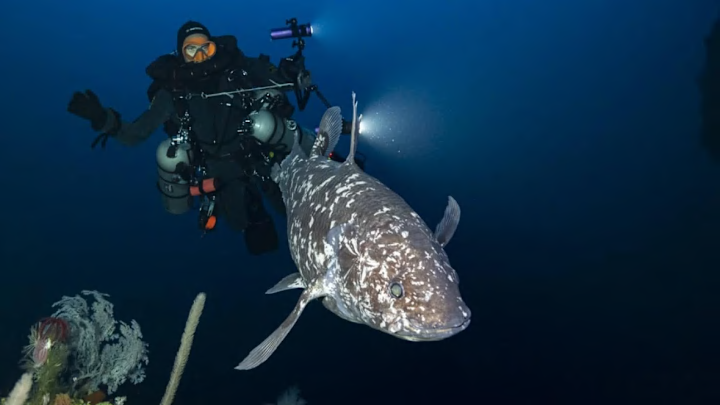Coelacanths were thought to be extinct until fishermen discovered the first live specimens of the fish in the 1930s. Now, nearly a century later, scientists have captured a rare look at the Indonesian coelacanth, one of the two species of the so-called “living fossils” that inhabit the ocean’s twilight zone.
According to Oceanographic, divers from UNSEEN Expeditions, a French nonprofit dedicated to oceanic exploration and conservation, filmed an Indonesian coelacanth (Latimeria menadoensis) in its native environment for the first time. The scientists found the specimen near Indonesia’s Maluku Archipelago 475.72 feet below sea level, around its natural range of about 500 to 800 feet underwater. This is the first time researchers have photographed the ancient ocean dweller at such depths, though it has been seen in shallower seas. In 1998, then-doctoral student Mark V. Erdmann first photographed the species at about 50 feet deep. Alexis Chappuis, the leader of UNSEEN Expeditions, captured the most recent Indonesian coelacanth footage in situ. Their findings were reported in the journal Scientific Reports.

The only other living coelacanth species known to science is the West Indian Ocean coelacanth (Latimeria chalumnae). Underwater photographer Laurent Ballesta snapped a picture of it over 10 years ago for the first time, per Oceanographic. The animals’ fossils date back more than 400 million years, long before dinosaurs roamed the Earth.
Unfortunately, both coelacanth species are at risk. The IUCN Red List labels the West Indian Ocean species as “critically endangered” and the Indonesian coelacanth as “vulnerable.” Knowing that coelacanths live in the Maluku Archipelago should help researchers determine the species' overall range and inform conservation plans.
Read More About Underwater Animals:
